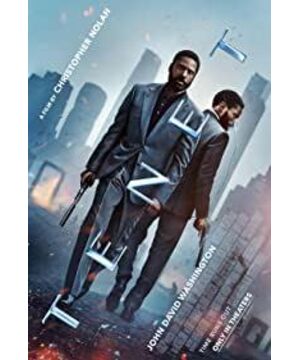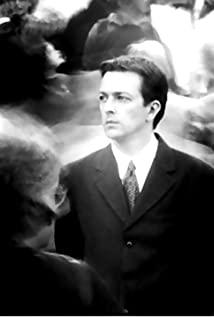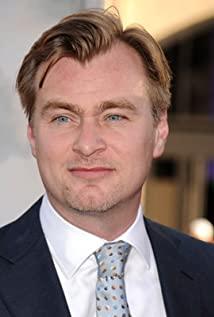This is a draft for the WeChat official account of "Looking at Ideals", and the written article has been changed. For the final written version, please follow the WeChat official account of "Kan Ideal", or click this link .
The completion of each great magic is inseparable from three processes: one is "verification", where the magician shows the performance props that seem to be ordinary, but actually have already moved; the second is "transfer", which seems to be in the hands of the magician. Ordinary things become different in an instant. At this time, if you want to find the secret behind the magic... it is almost impossible, which is why there is a third step; the third is "blind", which is also magic The most critical link is the process of the magician using skills to cover up. Once a certain balance is reached, a phenomenon that has never been seen before and shocks you will occur-that is, magic. -"Fatal Magic"
For me, when did Nolan's magic lose its power?
I think there is a certain point in time. To be precise, just in one third of the "Dunkirk" movie, the British officer played by Hillian Murphy appeared for the second time. When this Nolan's queen supporting actor appeared for the first time, he was floating on the sea, being picked up by the young and old in the boat, shivering, and accidentally killed the boy-but when he appeared for the second time, time suddenly He flashed back to the moment when his ship had not been sunk by the Germans. At that time, he was sitting on the ship with a proud face and said to the other British soldiers floating on the sea: "This ship is full, you wait for the next trip. Right"-at that moment, there was only one sentence in my heart:
"Hey, it's this set again."
Movies are the art of time. The technique of "montage" represents the essence of film-editing two completely different times together can create a new meaning. This is also the meta-proposition that Nolan has been exploring since his debut-time. Starting from "Following", his works show that it is the repeated expansion and deepening of the concept of time. "Shards of Memory" cuts two timelines, one front and the other back interlaced; in "Fatal Magic", the timelines of the two protagonists are staggered; in "Inception", each layer of dreams is separated The method is that the time of the next level of dreams is ten times slower than the previous level; in "Interstellar Transition", the relativistic effect caused by the black hole relentlessly staggers the time on both sides of the earth and the spacecraft; in "Dunkirk" , A week on land, a day on the sea, and an hour in the air; until recently, this "Creed" deduce the whole story with the concept of "going against the time" as the core science fiction. Going back to the famous line in "Fatal Magic" we quoted at the beginning of the article, we can see that almost every Nolan movie actually conforms to the concept of time magic he laid out: First, we enter a The world that seems ordinary, but has actually been tampered with by Nolan; then, Nolan showed us a very unique setting (for example, the protagonist’s two timelines are intertwined, or multiple Dream time slows down); in the end, he shows how the story advances dazzlingly under such a time setting. In the end, the audience understands this set of sophisticated structures in a kind of "epidemic", and produces a kind of similar " The emotion of "Sense of Wonder", marveled at Nolan's time magic.
Nolan's tool for performing this time magic is editing—or, we can say, the free combination of pictures and sounds in the form of movies. In "Interstellar", the audience followed Cooper's main perspective and spent only a few minutes on the Flood Planet, while the time on the spacecraft has passed more than ten years; and in "Dunkirk", the background music The tick of the second hand of the clock always reminds the audience of the existence of time; in "Fragments of Memory", the entire film is composed of a combination of black and white and color pictures, and there is no clear explanation; but the audience speaks to the characters Observing the advancement of the logic of the plot, I can gradually understand that the two pictures represent two different timelines, and I am curious about the relationship between the two timelines; the movie ends, and the two timelines eventually intersect, and the audience The final epiphany was that Nolan finally revealed the truth as a magician.
We can carefully observe how Nolan plays with this set of time magic in Inception. First of all, the film opened with a thrilling operation of stealing treasures, and the audience was immediately attracted. However, it was not until the end of the operation that Nolan showed us the setting in the film for the first time, which is the device that dives into the dreams of others—— At the same time, this setting is also in line with the daily experience of the audience: most people will quickly forget the content of their dreams. Then, the protagonist’s team was given a more important task: to dive into the deeper dream of another goal and to implant a concept. In the superimposition of multiple dreams, the core setting is revealed: every time you go deep into a dream, time will be ten times slower; in a dream, you can determine whether you are out of it by observing a token you designate. Dreamland. Nolan cleverly implanted this setting into the audience through the background sound effects, which is the song listened to by one of the supporting actors of the team. At the same time, he used the symmetrical layer to dive into the dream and then layer to leave. The audience finally understood this set of time. The logic of nesting then fell into the concept that Nolan deliberately "implanted": Did the top finally fall?
In the "Creed", this time magic has been brought to a new height. The core concept of this work is "going against the time." The protagonist, as an agent, was introduced into a great crisis that would destroy the world, only to discover that this great crisis was triggered by future humans. Mid-retrograde technology: Through a device transformation, objects and humans themselves can enter a reverse timeline. Therefore, those of us who are flown at normal times seem to see bullets flying backwards from the bullet holes into the gun chamber, the car returns to its normal form from the rollover, and the people are walking backwards. From the middle of the movie, the protagonist enters the reverse-time flow, and the movie shows the wonder of the reverse-time world: seagulls fly backwards, the wind blows backwards, people walk backwards, cars drive backwards, everything around you The sound becomes weird (because the sound is also reversed). Furthermore, Nolan arranged for the retrograde timeline and the forward timeline to be staggered, in the same scene, and the characters in the clockwise and counter-clockwise fight with each other. From the perspective of Shun Shi's character, the pistol was actively flying from the ground to the opposite character's hand, and with every gunshot, the bullet hole on the wall disappeared instantly, and the bullet flew back into the pistol. In the last war scene, the tactical squad in time and the tactical squad in reverse time cooperated with each other to perform tasks to prevent the destruction of the world, and this time operation was brought to the extreme. I believe Nolan must have made a precise deduction. To ensure that this dazzling operation is logically smooth, enough details are ambushed so that the audience can marvel at his precision and structure after two or more brushes.
But there is always the most basic question: Is this precision and structure what we really want to see?
Going back to the beginning of this article, I once said that when Hillian Murphy showed up for the second time, I completely lost interest in "Dunkirk"; after that, I stopped being interested in this movie. Seriously. It is just another editing show of Nolan: using complex parallel time and space, cross-editing technology to cut three different timelines together, the so-called "one week on land and one hour in the sky"; indeed, if you With serious investment, you can distinguish between these different pictures, who is who in different timelines, and Nolan’s famous "multiple climax" theory—that is, cut the conflicts of different timelines together; but at For me, why should I do this? Peeling off the skin of this sophisticated editing technique, what we see in the end is still a tedious "event" with no conflicts and no enemies but unexpected occurrences: it cannot even be called a story. The roles in it are basically all functional roles, to say some predetermined lines to make some prescribed responses. So apart from this complex and sophisticated editing, what else can you find in this movie? I couldn't empathize with the British people at the time, and couldn't put myself in it. You can admire the precision and complexity of a mechanical watch, but will you be moved to cry by this watch?
This is why Nolan's magic lost its power. He was so obsessed with his methodology that he no longer cared about anything else. He can apply this set of three-stage magic techniques to any type of story: for example, a suspenseful story about finding oneself ("Shards of Memory"); or a thriller story about two people fighting ("Fatal Magic"); Or a mission-complete action story ("Inception"); or a science fiction story flying into space ("Interstellar"); or a history-based war story ("Dunkirk"); or a saving the world The story of spy warfare ("Creed"). Just cut these stories into small pieces and have a complicated cross-editing and timeline confusion, Voila! The audience can marvel at "the original movie can still be like this!"
When I watched "Creed", it was basically a repeat of the movie-watching experience of "Dunkirk". When the characters in the film first explained the concept of "going against the time", I was very sure that the protagonist must go back to the past to solve the crisis; the heroine recalled that she saw another woman on the boat jump off in Vietnam, I knew that the person was mostly herself; in the insurance warehouse in the Netherlands, the protagonist wrestled with a masked man in black who went retrograde. This person was 100% himself who came back from retrograde in the future. Nolan’s intentions in this scene are too obvious: the supporting actor played by Robert Pattinson obviously knocked off his helmet and mask, showing a slightly strange expression, indicating that he had known this person a long time ago; however, the movie I deliberately did not give any frontal shots of the masked man, indicating that this must be a role that the audience recognizes and played an important role in the film, and deliberately not to let the audience confirm. Here we can conclude that besides this person is the protagonist, who else can he be?
For me, Nolan's movie has become "the only way his movie can be". The magician just showed the prop in his hand. This prop is an old thing he has used many times; and he wants to hand the pigeon in the hat from his left hand to his right hand. This action is already familiar to him; and The action he finally took out the pigeon from the hat was so urgent that the white feathers of the pigeon were exposed in the hat without any cover. In "Fatal Magic", Nolan patiently laid out the growth experience of the two protagonists along the way, showing that the magician played by Hugh Jackman could not surpass the loss and anxiety of his opponent on the road; this allowed him to finally use the human body The intention of copying to achieve transcendence is extremely real. And the emotional entanglement between his opponent, Christian Bale and his wife, is pointed out in every move. Similarly, in "Inception", Leonardo DiCaprio's character and his deceased wife have a sincere and deep relationship, and it runs through the entire movie, laying a solid emotional foundation for his final decision. . Not to mention the theme of "Love can travel through time and space" that Nolan wanted to express in "Interstellar". However, when it comes to "Creed", all the character emotions and role arcs have been abandoned, and all the characters, including the protagonist, have become instrumentalists, just keep going to the next plot paragraph to rush to the scene. Large sections of lines only serve the role of setting the background (Exposition). When the audience doesn’t know how the protagonist suddenly establishes a good relationship with the Indian arms queen, they don’t understand how the heroine is often from a spy movie. Some passers-by were promoted to the position of the central figure in promoting the plot in one fell swoop. Third, they did not understand the psychological motives of the villain in this world-destroying crisis event—all these constitute the narrative elements of a movie story. They have all been pushed far away, giving way to the sophisticated structure of time and space events that Nolan contemplated: In the film, the audience can clearly notice many things that should be there to portray the character and behavior of the characters. The logical plot paragraphs and scenes are all lacking. I can make up for it. The editor is facing the non-editing software thinking about how to put Nolan’s complex space-time structure like an octopus into the prescribed two and a half hours; since this space-time structure cannot be deleted, Then only those other things can be sacrificed.
In the film, a supporting actor who only showed his face for about five minutes said to the protagonist: Don't try to understand, but use intuition. This sentence is extremely correct for movies-all image art persuades is actually your crawling brain, not the neocortex; this is also the reason why Douyin is so successful all over the world. I re-watched "Border Killer" last night, and I have a more real understanding of this sentence: Roger Dickins’ iconic aerial shot of aerial mirror, and the section with no line or soundtrack was praised by countless film critics. The border escort passage, just using the picture, conveys the tension of all enemies. The camera was placed on the roof of the car, and the director repeatedly shot the same shot: the bumps caused by the bulging of the convoy driving over the road. Every time the convoy crosses the roadblock, the camera shakes, and the audience feels like they are sitting in the car themselves, following the whole convoy shaking nervously.
In the "Creed", none of these are present. Every shot of Nolan serves his time magic, and the ultimate goal is to complete his sophisticated set of forward and backward time-space structures. In this sense, Nolan actually expects you to go. Understanding, not feeling. Let the audience empathize with "all eyes and eyes", this kind of thing cannot be done through large and large explanation lines; but the audience must mobilize their own logical ability and notice that Nolan is in the narrative, through the lens, lines and voices. Only after the details come out can we understand the core structure of this space-time system.
Then we have to ask the core question of this article: understand this set of temporal and spatial structure, and then? Can it point to a larger and richer story? Can we get the emotional satisfaction we are looking for in the movie? After all, what is the meaning of this movie?
My answer is that the meaning of this movie lies in this structure, it does not point to more things. Here I would like to make an analogy: This movie is like a second-year plane geometry math problem in Nolan's junior high school. The audience can work hard to get the problem out. In fact, you have also learned the basics of the topic, but you have forgotten them all. You need to think about it. After making it, you will feel a sense of accomplishment spontaneously: It seems that my knowledge of plane geometry has not been completely forgotten.
But is the movie a question?
(This article deliberately adopts the Nolan style text layout method)
View more about Tenet reviews











